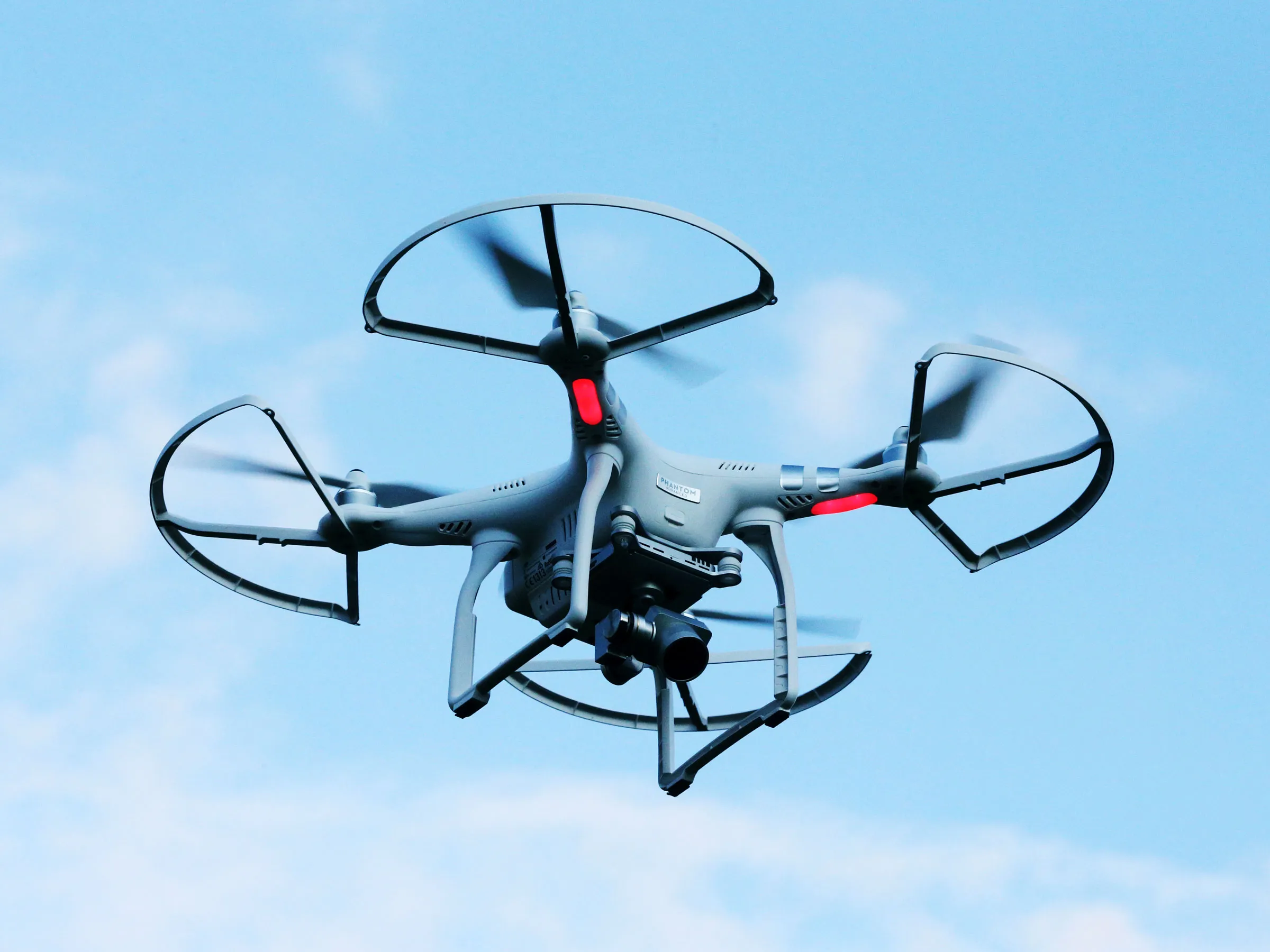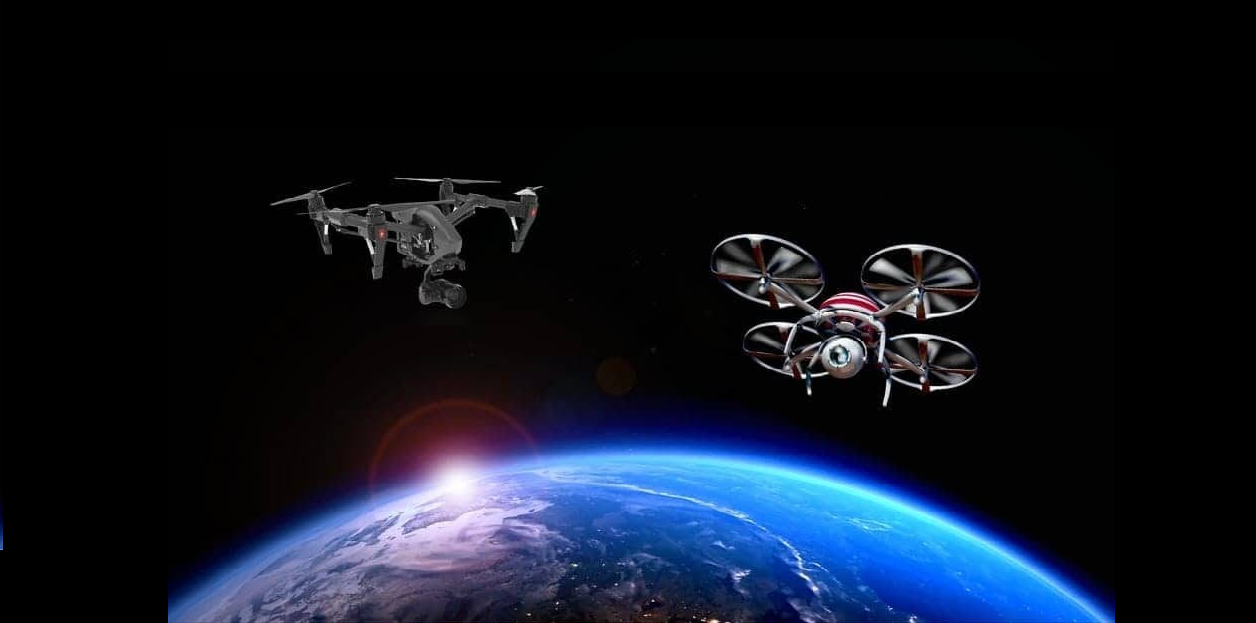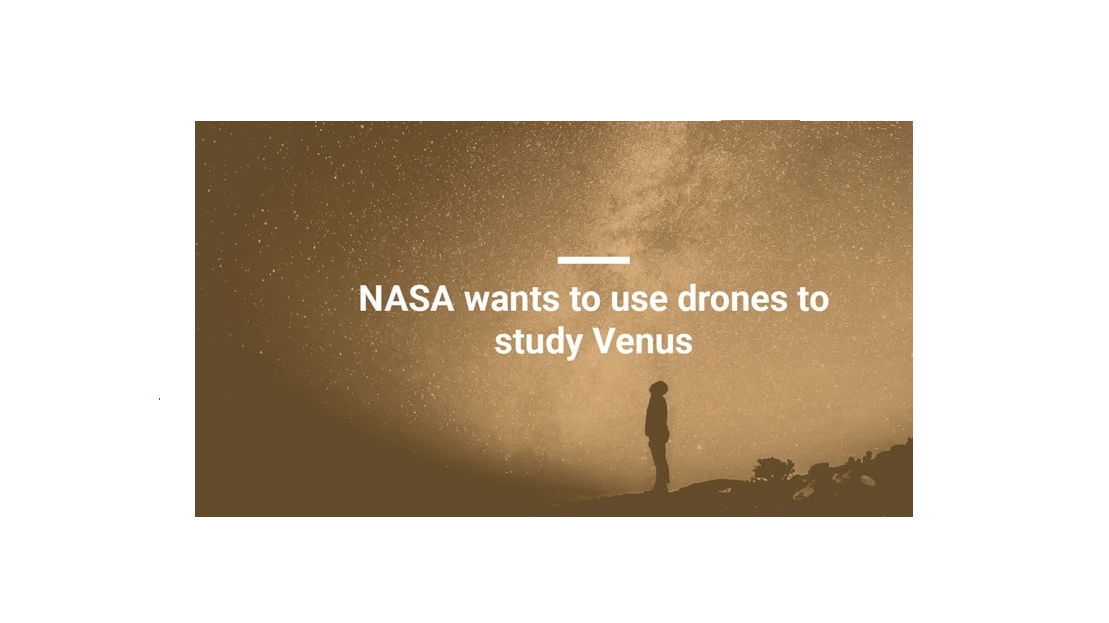
In the boundless expanse of the cosmos, can we truly harness the power of drones to explore, adapt, and revolutionize space exploration? Strap in for a journey into the unknown, as we venture into the endless skies and beyond with the question, Can drones work in space?Imagine a future where autonomous aerial wonders roam the heavens, mapping uncharted celestial territories, conducting vital research, and pushing the limits of human knowledge.
As we delve deeper into the realms of astrophysics and engineering, we'll unveil the incredible innovations that enable drones to operate beyond Earth's atmosphere. From asteroid mining missions to the investigation of distant planets and the repair of satellites in orbit, these space-faring drones are poised to redefine the way we explore and interact with the cosmos.
Explanation Of How Drones Work In Space?
Drones are unmanned aerial vehicles (UAVs) that can fly autonomously or be controlled by a pilot. They are powered by batteries or fuel and use a variety of propulsion systems, including electric motors, jet engines, and propellers.
Propulsion
Drones use propellers to generate lift and thrust. Propellers are essentially fan blades that rotate to push air down. As the air is pushed down, it creates an upward force on the drone, lifting it into the air. The speed and direction of the propellers can be controlled to change the drone's altitude, direction of travel, and rate of turn.
Navigation
Drones use a variety of navigation systems to determine their position and orientation. These systems may include GPS, accelerometers, gyroscopes, and compasses. GPS provides the drone with its location on Earth, while the accelerometers and gyroscopes measure the drone's movement and orientation. The compass helps the drone to maintain its heading.
Control
Drones are controlled by a pilot or by an autonomous flight controller. The pilot uses a remote control to send commands to the drone, such as take off, land, move forward, backward, and turn. The autonomous flight controller uses the drone's navigation system to fly the drone along a preprogrammed path or to avoid obstacles.
Overview Of How Drones Work?
When a drone is powered on, its propulsion system starts up and the propellers begin to spin. The drone's navigation system then initializes and determines the drone's position and orientation. The pilot or autonomous flight controller then takes control of the drone and begins to fly it.
To take off, the pilot or autonomous flight controller increases the speed of the propellers. As the propellers spin faster, they generate more lift and thrust. When the lift exceeds the weight of the drone, the drone takes off.
To fly the drone, the pilot or autonomous flight controller controls the speed and direction of the propellers. By changing the speed of the propellers on one side of the drone, the drone can be turned. By changing the speed of all of the propellers, the drone can be moved up, down, forward, or backward.
Unique Challenges And Requirements Of Space
Space is a unique environment with a number of challenges and requirements that must be considered when designing and operating spacecraft and systems. Some of the most significant challenges include:
- Muscle atrophy - Without gravity to work against, the muscles in the body atrophy, or weaken. This can make it difficult for astronauts to perform tasks and can also lead to health problems after returning to Earth.
- Bone loss -Microgravity can also lead to bone loss. This is because the bones are not bearing weight as they do on Earth.
- Fluid shift - Microgravity can also cause fluids in the body to shift, which can lead to problems such as vision problems and swelling of the face and hands.
- Heat dissipation - Without air to convection, heat must be dissipated through radiation. This can be difficult, especially for spacecraft with high power requirements.
- Micrometeoroids and orbital debris -Micrometeoroids are tiny particles of rock and dust that can travel at very high speeds. Orbital debris is man-made objects that have been left in orbit around Earth.
- Radiation -Space is filled with radiation from the sun and other stars. This radiation can damage spacecraft and electronics, and it can also pose a health risk to astronauts.
- Vacuum -Space is a vacuum, which means there is no air. This creates a number of problems, including:
- Microgravity -Microgravity is the condition of weightlessness. It is caused by the freefall of spacecraft in orbit around Earth. Microgravity can have a number of negative effects on astronauts, including:
- Distance -Space is a very large and empty place. This makes communication and transportation between Earth and spacecraft a challenge. It can also make it difficult to repair or rescue spacecraft if they experience problems.
To operate effectively in space, drones would need to be adapted or redesigned in a number of ways. Conventional drone mechanisms would not function well in space. Here are some of the reasons why:
- Propulsion -Drones would need to use alternative propulsion systems, such as ion thrusters or plasma thrusters. These propulsion systems do not require air to operate.
- Navigation -Drones would need to use alternative navigation systems, such as inertial navigation systems or star trackers. These navigation systems do not rely on GPS.
- Control -Drones would need to be controlled by autonomous flight controllers that are designed for space operations. These controllers would need to be able to navigate without GPS and to operate in a vacuum.
NASA Is Working On Drones That Can Fly In Space
NASA is working on a number of projects and initiatives aimed at developing and utilizing drones in space. Some specific examples include:
- The Dragonfly mission -Dragonfly is a dual-quadcopter mission that will explore Titan, the largest moon of Saturn. It is scheduled to launch in 2027 and arrive at Titan in 2034. Dragonfly will use its quadcopters to fly over Titan's surface and lakes, collecting samples and taking images.
- The Mars Helicopter Scout -The Mars Helicopter Scout is a small helicopter that was deployed on the Perseverance rover mission to Mars. It made the first powered flight on another planet in April 2021. The Mars Helicopter Scout is being used to demonstrate the feasibility of using drones for aerial exploration of Mars.
- The SPHERES project - SPHERES (Synchronized Position Hold Engage Re-entry and Stationkeeping) is a project that is developing autonomous robots that can fly inside the International Space Station (ISS). SPHERES robots are being used to test new technologies and to develop new ways for astronauts to interact with robots.
NASA is also developing new control systems for drones in space. These control systems will need to be able to navigate without GPS and to operate in a vacuum.
The main difference between drones and rovers or other autonomous vehicles previously used in space exploration is that drones can fly. This gives drones a number of advantages over rovers, including:
- Speed -Drones can fly much faster than rovers, which can save a significant amount of time when exploring large areas.
- Accessibility - Drones can access areas that are difficult or impossible for rovers to reach, such as steep cliffs and canyons.
- Maneuverability - Drones are much more maneuverable than rovers, which makes them ideal for tasks such as inspecting spacecraft and space stations.
NASA is still in the early stages of developing drones for space exploration. However, the projects and initiatives described above show that NASA is committed to making drones a key part of its future space exploration missions.
Key Technologies
NASA is developing a number of new technologies for drones in space, including:
- Ion thrusters -Ion thrusters are very efficient and can operate in a vacuum. NASA is developing ion thrusters for drones that will be used to explore Titan and Mars.
- Plasma thrusters - Plasma thrusters are another type of propulsion system that is very efficient and can operate in a vacuum. NASA is developing plasma thrusters for drones that will be used to explore the Moon and other planets.
- Inertial navigation systems - Inertial navigation systems do not rely on external navigation signals, such as GPS, so they are ideal for use in space. NASA is developing inertial navigation systems for drones that will be used to explore Titan, Mars, and other planets.
- Star trackers - Star trackers use the positions of stars to determine the orientation of a vehicle. They are very accurate and can operate in a vacuum. NASA is developing star trackers for drones that will be used to explore Titan, Mars, and other planets.
What Happens When A Drone Is Put In A Vacuum?
When a conventional drone is exposed to a vacuum, such as space, it will not function properly. This is because the vacuum environment poses a number of challenges to the drone's components and systems.
Battery Functionality
One of the most significant challenges is the effect on the drone's battery. Lithium-ion batteries, which are commonly used in drones, are not designed to operate in a vacuum. In a vacuum, the battery will overheat and eventually fail.
Electronics
The drone's electronics will also be affected by the vacuum environment. The vacuum can cause the electronics to overheat and short-circuit. Additionally, the vacuum can cause the electronics to lose their electrical insulation, which can lead to electrical arcing and fires.
Materials
The materials used to construct the drone may also be affected by the vacuum environment. Some materials, such as plastics and rubbers, can outgas in a vacuum. Outgassing is the release of gases from a material. The gases released during outgassing can form a layer on the drone's components, which can interfere with the drone's operation.
Necessity For Drones Designed Explicitly For Vacuums Or Space Environments
The challenges described above make it clear that conventional drones are not suitable for operation in a vacuum or space environment. Drones that are designed to operate in these environments must be specially adapted to address the challenges posed by the vacuum environment.
NASA is one of the organizations that is developing drones for vacuum and space operation. NASA's Dragonfly mission, which is scheduled to launch in 2027, will use a dual-quadcopter spacecraft to explore Titan, the largest moon of Saturn. The Mars Helicopter Scout, which was deployed on the Perseverance rover mission to Mars, is another example of a drone that is designed for vacuum operation.
The development of drones for vacuum and space operation is a challenging task, but it has the potential to revolutionize space exploration. Drones can be used to explore remote and dangerous areas, to inspect spacecraft and space stations, and to deliver supplies to astronauts.
Why NASA Is Interested In Drones?
NASA is interested in drones because they have a number of potential benefits and applications for space exploration.
Close-up Inspections Of Spacecraft
One of the most promising applications for drones in space is for close-up inspections of spacecraft. Drones can be used to inspect the exterior of spacecraft for damage or signs of wear and tear. They can also be used to inspect the interior of spacecraft, such as the cargo bay or the International Space Station (ISS).
Aiding In Repair Missions
Drones can also be used to aid in repair missions. For example, drones could be used to transport tools and materials to astronauts who are working on a repair mission. Drones could also be used to assist astronauts in performing complex tasks, such as installing new components or repairing damaged wiring.
Exploring Areas Where Larger Crafts Might Find It Challenging To Navigate
Drones can also be used to explore areas where larger spacecraft might find it challenging to navigate. For example, drones could be used to explore the interior of craters or to fly through narrow canyons. Drones could also be used to explore the surface of asteroids or comets.
NASA's Broader Vision For Space Exploration And How Drones Fit Into This Framework
NASA's broader vision for space exploration is to "understand the universe, discover life beyond Earth, and inspire the next generation to explore." Drones can play a significant role in achieving this vision by enabling new and innovative ways to explore space.
For example, drones could be used to explore new planets and moons, to search for life beyond Earth, and to study the solar system in more detail. Drones could also be used to build and maintain space infrastructure, such as space stations and lunar bases.
NASA’s Drone Traffic Management Project
NASA's Drone Traffic Management (DTM) Project is a research project that is developing a system to safely manage drone traffic in the low-altitude airspace. The project is working with industry and academia to develop technologies and standards that will enable the safe and efficient integration of drones into the national airspace system.
The DTM system is designed to be a decentralized system that will allow drones to fly autonomously and interact with each other and with other airspace users. The system will use a variety of technologies, including GPS, radar, and ADS-B (Automatic Dependent Surveillance-Broadcast), to track the location and movements of drones. The system will also use artificial intelligence to predict the future movements of drones and to identify potential conflicts.
The DTM system could have a significant impact on drone traffic, both in Earth's atmosphere and potentially in space. On Earth, the DTM system could enable the safe and efficient operation of drones for a variety of applications, such as package delivery, aerial photography, and disaster response.
NASA is collaborating with a number of partners on the DTM project, including the Federal Aviation Administration (FAA), industry partners, and academic institutions. Some of the technologies and innovations that are being developed as part of the DTM project include:
- UAS Traffic Situation Display (UTSD) -The UTSD is a software tool that provides real-time information on the location and movements of drones. The UTSD can be used by air traffic controllers, drone pilots, and other airspace users to avoid conflicts and to ensure the safe operation of drones.
- Unmanned Aircraft System (UAS) Service Provider (USP) -The USP is a service that will provide drones with access to the DTM system. The USP will also be responsible for managing drone traffic and for ensuring that drones comply with all applicable regulations.
- UAS Beyond Visual Line of Sight (BVLOS) -BVLOS is a technology that enables drones to fly beyond the visual line of sight of the pilot. BVLOS is essential for many drone applications, such as package delivery and aerial photography.
See Also: What does a drone look like from ground?
FAQ's About Can Drones Work In Space?
Would A Drone Work On The Moon?
While it is tempting to dream of gently floating above the terrain of an alien world, the physics of real space travel dictates that such flight comes with limitations. With a limited ability to “fly,” drone flights on the Moon are possible but limited.
Can Drone Fly Above Clouds?
One of these circulars, Advisory Circular 107-2A, states that drones should not be flown over clouds. While this is not a regulation, it is important to follow this guidance to ensure the safety of other aircraft in the sky.
How High Can The Highest Drone Fly?
Drones are legally restricted to an altitude of 400 feet. Despite this, drones have the capability to reach as high as 33,000 feet. The Zephyr drone set a world record in 2021 with a flight altitude of 76,100 feet (23,195.28 meters).
Conclusion
In conclusion, the prospect of drones working in space represents a remarkable leap forward in our capacity to explore, understand, and harness the cosmos. We've seen how these autonomous marvels can navigate the most challenging and unforgiving environments, from the vacuum of space to the harsh conditions of distant planets.
As we look to the future, the synergy of human ingenuity and robotic precision promises to open doors to new frontiers in space research and commercial opportunities. While challenges remain, including issues of reliability, durability, and regulatory concerns, the promise of space-faring drones is undeniable.

